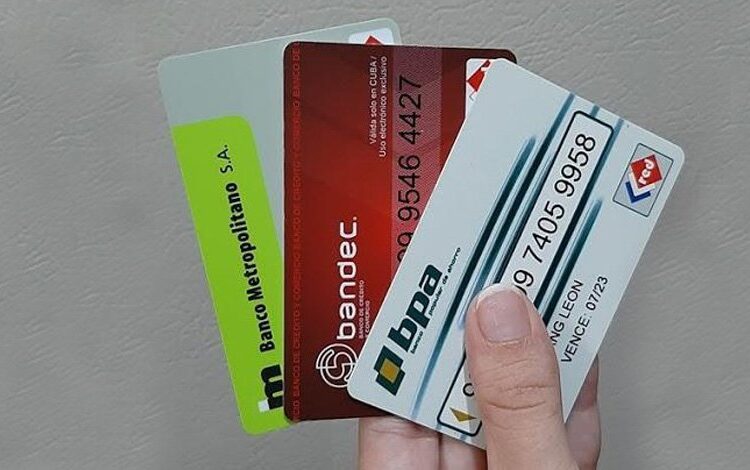Despite many rumors and speculations about its imminent death, the MLC (freely convertible currencies) will remain alive for now, as Cuban authorities confirmed this Wednesday.
Even if it remains on artificial respiration due to the visible decrease in the goods available to it and its loss of prominence in the midst of the dollarization promoted by the government, the electronic currency will continue to operate on the island and its bank accounts will not disappear.
The news was confirmed by Alberto Javier Quiñones Betancourt, vice president of the Central Bank of Cuba (BCC), during the radio-television program Mesa Redonda, dedicated to the thorny issue of dollarization.
To clear up the population’s doubts, the official — although he assured that there is “a large part of the currency operating today outside the banking system” — guaranteed that as part of the government measures to organize the complex monetary panorama of the country “the accounts denominated in MLC that clients have today in the banks do not disappear.”
“These accounts denominated in MLC and the commitment of the banks in the obligations with their clients, based on the funds they have represented or the funds they may have in the future, will remain,” he explained.
“Even the cards associated with the accounts in MLC continue to operate in the network designed for them to operate, and the banks, as part of their options and work, will continue to look for alternatives to expand their facilities and uses,” he added.
Quiñones Betancourt asked the citizens to trust the banking and financial system with respect to clients with this type of cards, which will continue to be fully valid.
Dollars in cash…welcome
After the country had an almost forced bancarization process since its implementation starting in August 2023, the official now defended clients’ freedom to pay in the way that best suits them, whether through cards such as Clásica, which encodes currencies, or with USD in cash.
“When these digital mechanisms have been enabled, including Clásica, closely linked to service centers with sales in foreign currency, and there is a bancarization process in the country, why now accept the possibility that people buy directly with cash USD?” the BCC executive asked.
“We intend for clients to choose the best means of payment to use. For certain reasons, at certain times, the dollar has had to be regulated and the contexts will always be different over time,” he justified.
Birth and decline of a digital currency
Introduced at the end of 2019, the MLC was then validated as “the most practical mechanism” to capture foreign currency through remittances in the retail network, according to the then Minister of Economy Alejandro Gil Fernández, dismissed in February 2023 and subject to a criminal process of which nothing is known.
In February 2022, Gil Fernández went so far as to affirm that “if there had not been stores in MLC, the country’s economic situation would be even more complex, and much less the sales in pesos of goods and services to the population, given the high shortage of supplies in the commercial network.”
In October 2021, before the National Assembly of People’s Power, the then deputy chief of staff said that more than 300 million dollars of MLC sales had been used to supply merchandise to the national currency trade network, “which is why we should ask ourselves what the scenario would be if these stores had not been enabled, despite the limitations that are generated,” he asked.
However, in recent times, MLC stores have suffered an unstoppable shortage of supplies and their price on the street market reflected such a decline in the supply of goods and services, giving up more power to the overwhelming strength of the euro and the greenback, which necessarily support purchases in foreign markets by the private sector.
Is there currency backing?
“MLC accounts are not backed,” estimated Cuban economist, professor and businessman Oscar Fernández, in an interview with OnCuba News last September.
For his part, another Cuban economist, Pavel Vidal, said that the CUC, the CL (liquidity capacity), the single state income account and the Committees for the Approval of Foreign Currency, the MLC and partial dollarization in its different stages have been a failure because they do not address the underlying problems and imbalances of the economy.
“They have been used to patch things up, segment, avoid reforms and the correction of the official exchange rate. They are monetary mechanisms to continue extracting income and they try to keep afloat countless inefficient state enterprises that do not contribute to the development of the country,” Vidal explained in January to the platform el TOQUE.










